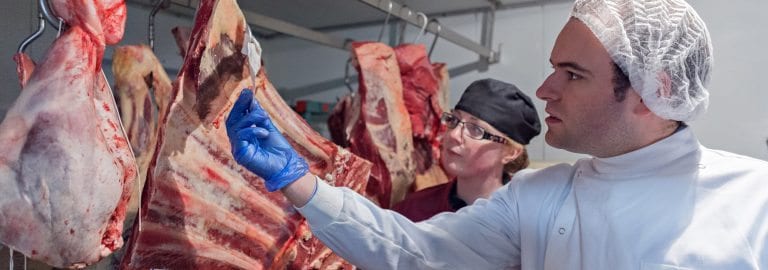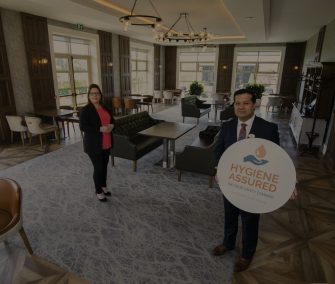Approval for Regulation (EC) No 853/2004 Specific Rules for Hygiene of Foodstuff of Animal Origin
Achieving approval under Regulation (EC) No. 853/2004, which sets specific hygiene rules for food of animal origin in the European Union, involves a detailed and structured process. Below is a step-by-step guide to help a food business achieve this approval:
Step 1: Understand the Regulation
- Study Regulation (EC) No. 853/2004: Familiarize yourself with the specific hygiene requirements for food of animal origin, including rules for different types of products (e.g., meat, fish, dairy, eggs).
- Identify Applicable Sections: Determine which parts of the regulation apply to your business, depending on the type of food products you handle.
Step 2: Prepare Your Facility
- Design and Layout: Ensure that your facility’s design and layout comply with hygiene requirements, including proper separation of clean and dirty areas, and the use of materials that are easy to clean and disinfect.
- Equipment and Utensils: Ensure that all equipment and utensils used in the processing, handling, and storage of food are hygienic, and can be effectively cleaned and maintained.
- Water Supply: Make sure your water supply meets potable water standards, as required by the regulation.
Step 3: Implement a HACCP-Based System
- HACCP Plan: Develop and implement a Hazard Analysis and Critical Control Points (HACCP) plan. This plan should identify potential hazards in your production process, establish critical control points, set limits, and outline monitoring and corrective actions.
- Documentation: Maintain detailed records of all HACCP procedures, monitoring, and corrective actions to demonstrate compliance.
Step 4: Establish Pre-Requisite Programme (PRP)/Good Hygiene Practices (GHP)
- Staff Hygiene Training: Train all employees on personal hygiene and food safety practices, ensuring they understand their role in maintaining food safety.
- Cleaning and Sanitation Procedures: Implement strict cleaning and sanitation procedures for all areas of the facility, and ensure regular monitoring.
- Pest Control: Establish a robust pest control program to prevent contamination.
- Waste Management: Ensure that waste is effectively managed and disposed of in a way that does not pose a risk of contamination.
Step 5: Implement Traceability Systems
- Product Traceability: Develop systems to trace all ingredients and food products from receipt through processing and distribution. This includes maintaining records of suppliers and customers.
- Labeling Compliance: Ensure that all product labeling complies with EU regulations, providing necessary information for traceability.
Step 6: Conduct Internal Audits
- Internal Audits: Regularly conduct internal audits of your processes, facility, and documentation to ensure ongoing compliance with the regulation.
- Corrective Actions: Address any non-conformities identified during audits promptly, and document the actions taken.
Step 7: Prepare for External Inspection
- Contact Competent Authority: Contact your local competent authority (e.g., food safety authority) to request an inspection for Regulation (EC) No. 853/2004 approval.
- Inspection Preparation: Ensure that your facility is fully prepared for inspection by reviewing all processes, records, and hygiene practices.
- Compliance Check: During the inspection, demonstrate compliance with all aspects of the regulation, including hygiene, HACCP, and traceability systems.
Step 8: Post-Inspection
Review Inspection Report: After the inspection, review the report provided by the authority. If any issues are identified, address them promptly and provide evidence of corrective actions.
Approval: If your business meets the required standards, you will receive approval under Regulation (EC) No. 853/2004, allowing you to produce and distribute food of animal origin within the EU market.
Step 9: Maintain Compliance
- Ongoing Monitoring: Continuously monitor and improve your hygiene practices, HACCP system, and traceability procedures.
- Regular Training: Provide ongoing training to staff to ensure they stay informed about food safety practices and regulatory requirements.
- Stay Updated: Keep up-to-date with any changes to Regulation (EC) No. 853/2004 or related legislation to ensure ongoing compliance.
Step 10: Re-Inspections and Renewals
- Periodic Re-Inspections: Expect periodic inspections by the competent authority to ensure continued compliance. Address any recommendations or issues they raise.
- Documentation Review: Regularly review and update all relevant documentation to reflect any changes in processes or regulations.
By following these steps, your food business can achieve and maintain approval under Regulation (EC) No. 853/2004, ensuring that your products meet the high standards required for the EU market.
The Food Safety Company offers a flexible technical placement service that provides businesses with experienced food safety or health and safety professionals on a part-time or full-time basis. This service is ideal for companies, especially small to medium-sized ones, that need expert support for their 853 application but find it more cost-effective than hiring a full-time resource. Whether for ongoing support or short-term projects, our professionals are available to ensure your business meets regulatory requirements efficiently and effectively.


